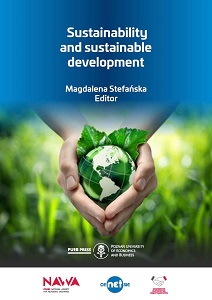
The Polish logistics real estate market as a link in international supply chains during the Covid-19 crisis
Purpose: The aim of the study is to determine the emerging trends of changes related to the situation of uncertainty and increased risk in supply chains, and at the same time limiting the negative effects of the epidemic on the logistics industry. Design/methodology/approach: The study focuses on the analysis of changes in the logistics real estate market in Poland. The analysis period covers the years 2004–2020. The data used here comes from reports from real estate advisory companies and Statistics Poland. Findings: The last dozen or so years has been aperiod of dynamic development in the Polish market of logistic space and facilities. The year 2019 turned out to be arecord year in the history of the market in terms of the increase in warehouse space and Poland has become the sixth biggest warehouse market in Europe. The year 2020 and SARS-CoV-2 has brought a lot of uncertainty about the future, and the recession has become afact. Practical implications: More than half a year after the outbreak of the pandemic, several emerging trends of changes related to the situation of uncertainty and increased risk in supply chains, as well as approaches to limit the negative effects of the epidemic on the logistics industry, can be observed. These include: an increase in e-commerce preferences in relation to traditional trade; increase in stock levels; relocation of production sites. Originality and value: The observed phenomena indicate moderate optimism and the resilience of the logistics industry in the medium term. In turn, in the long run, production can be expected to be relocated to closer areas (domestic or European) in order to shorten the supply chain.
More...






